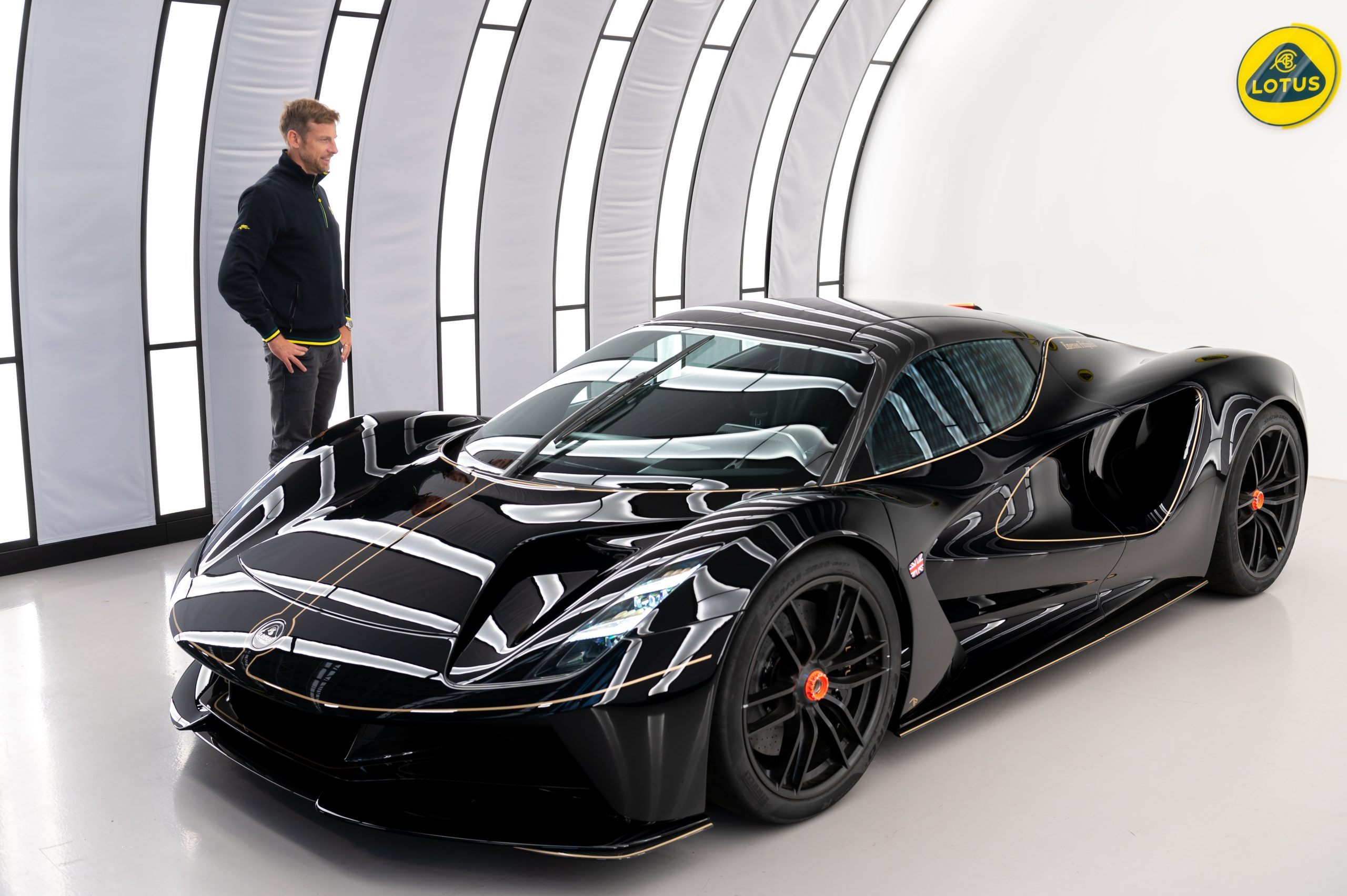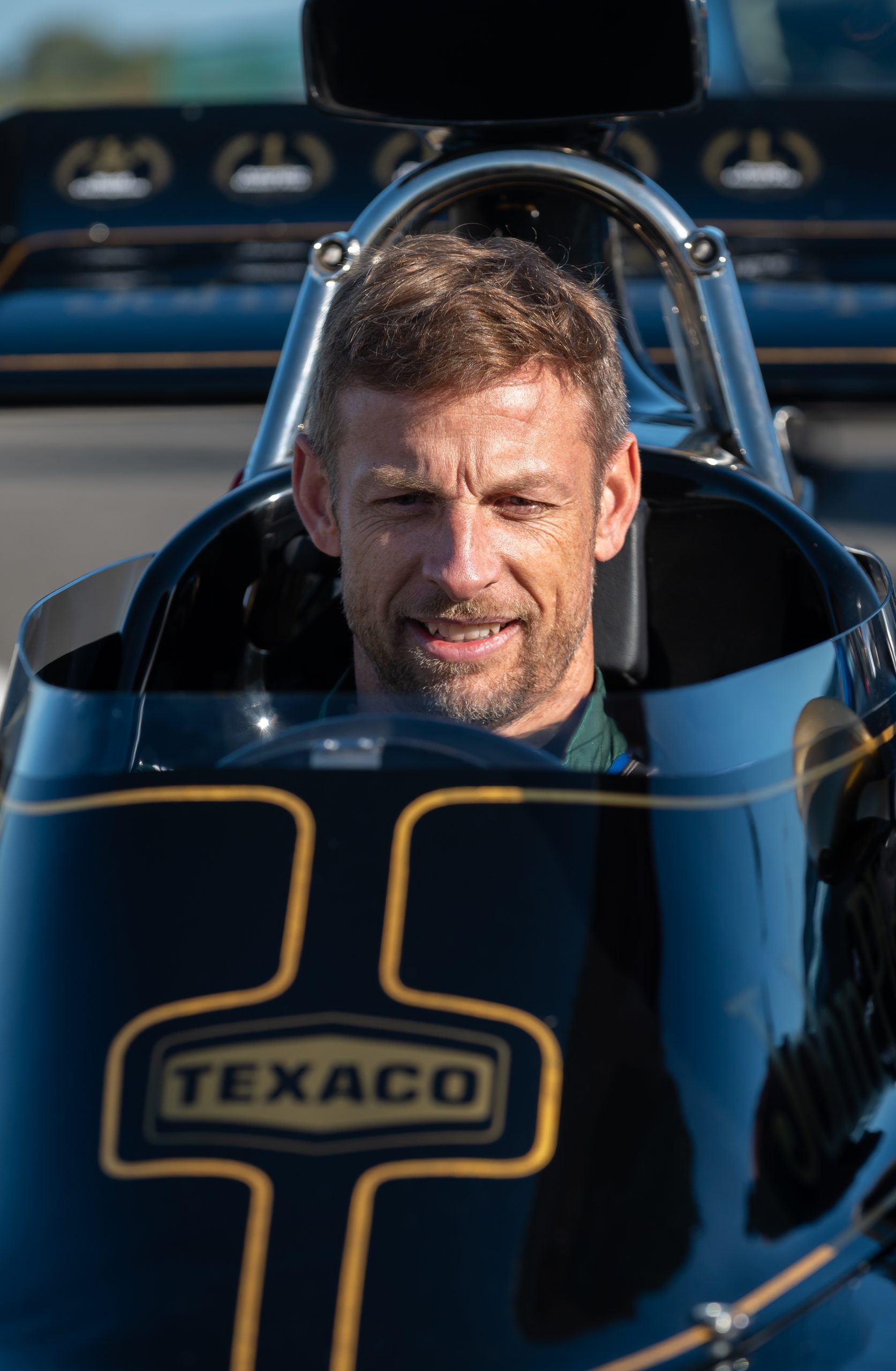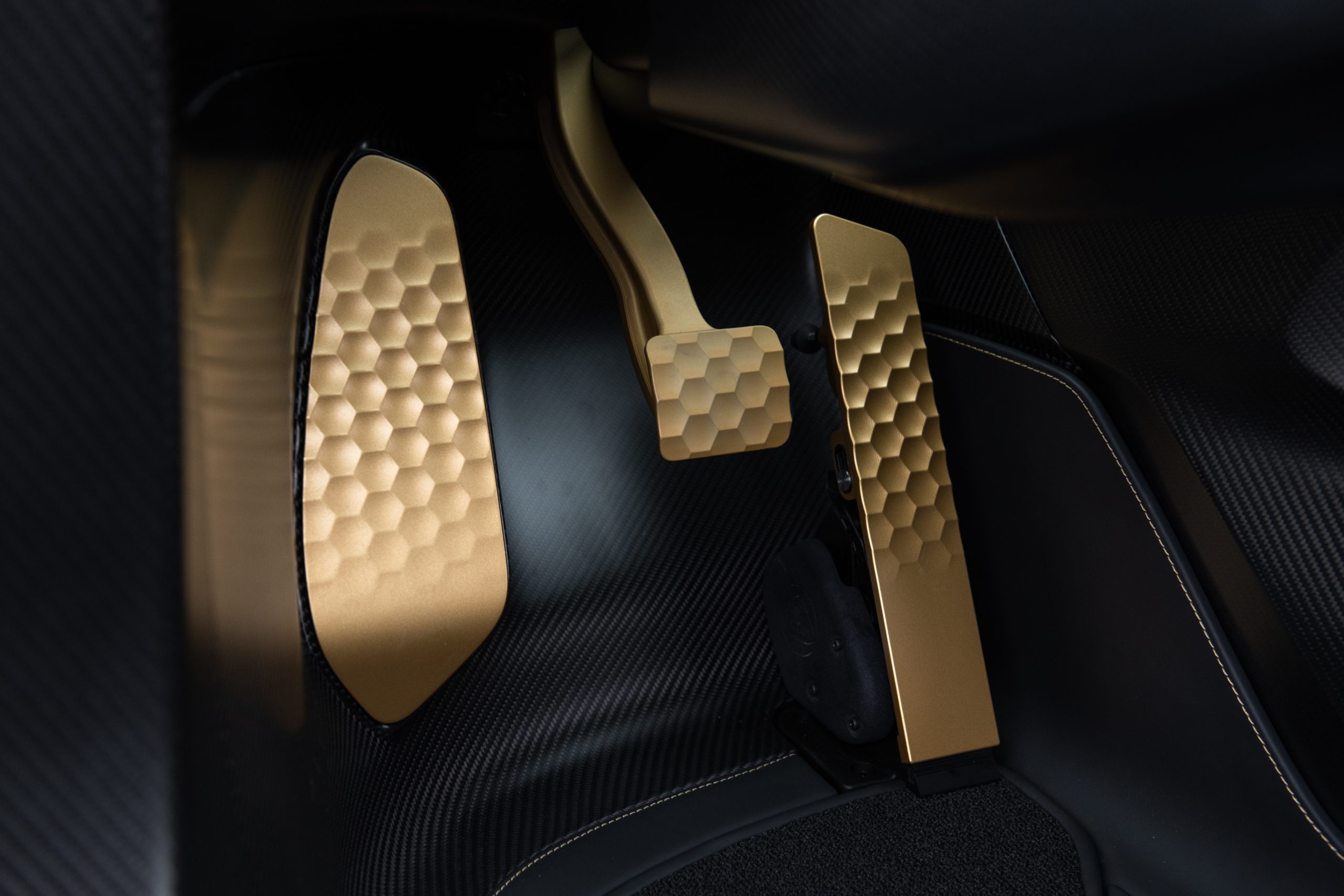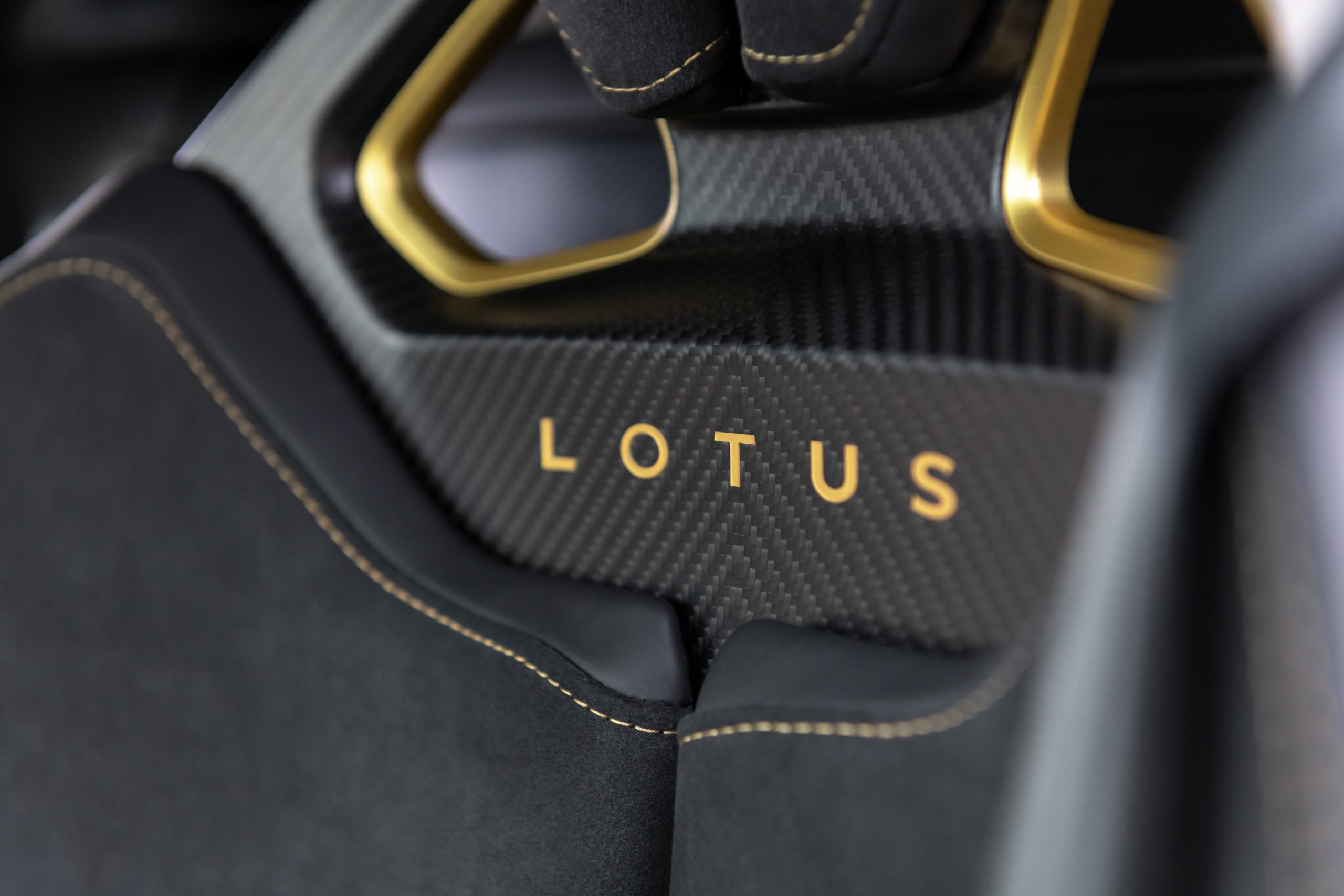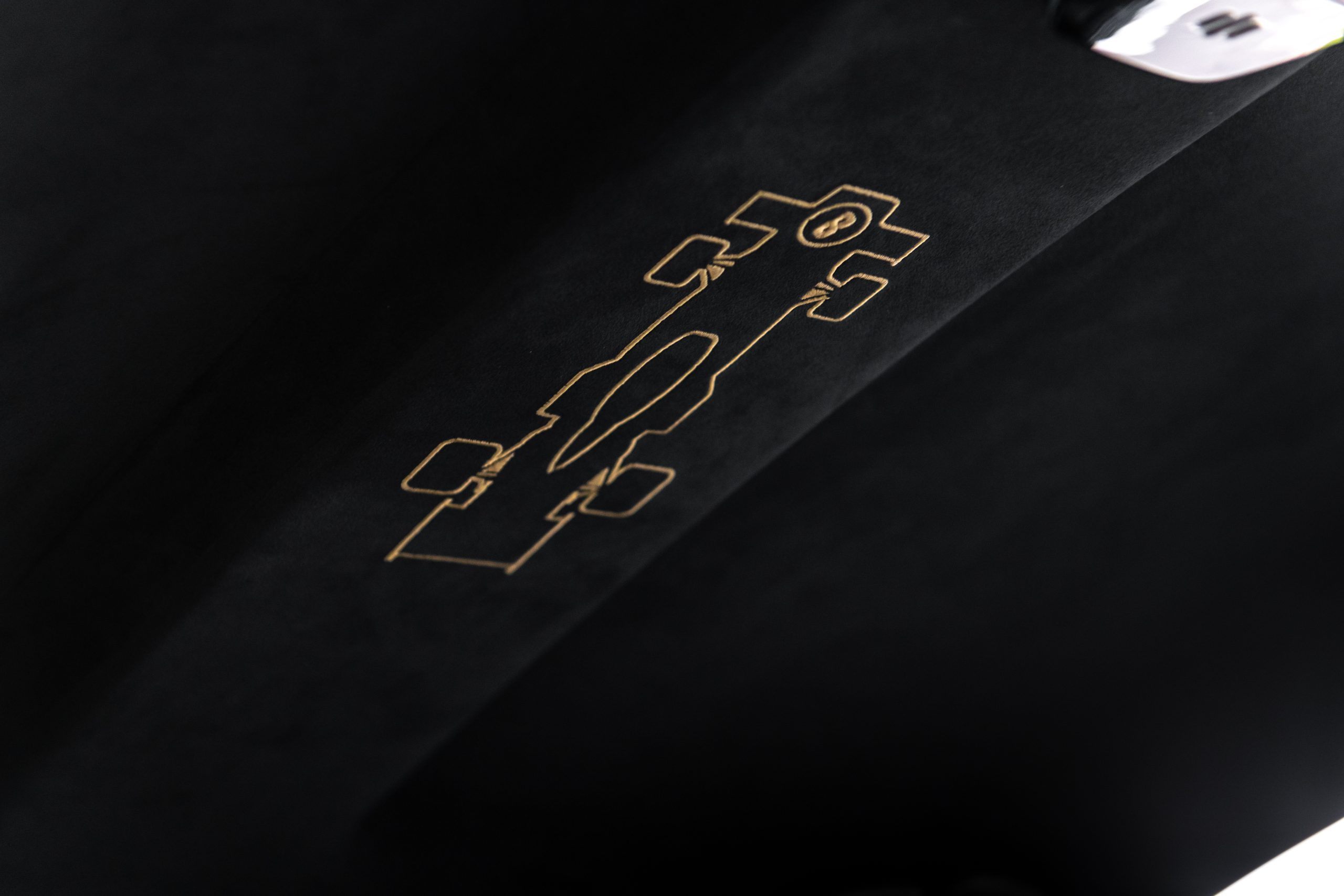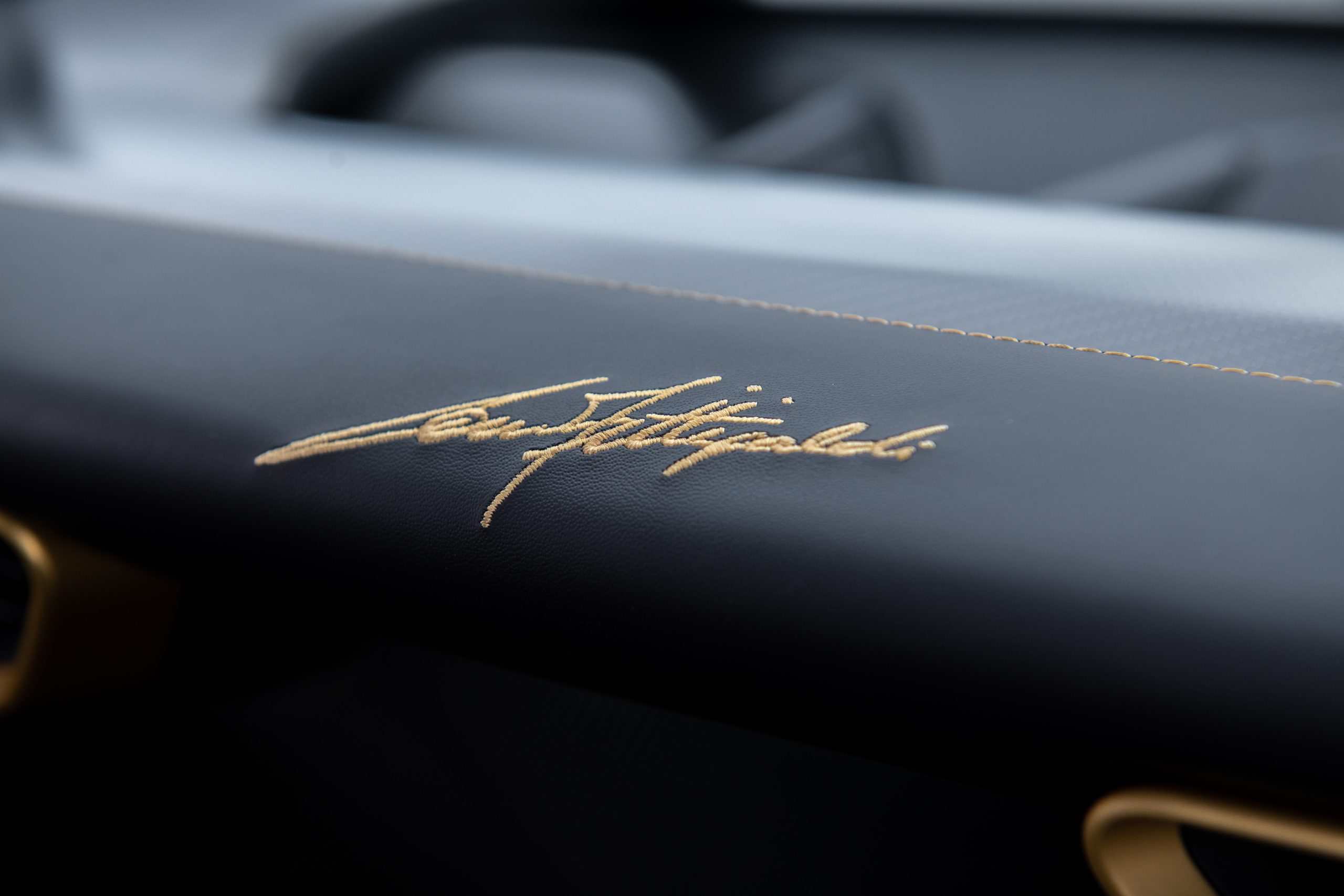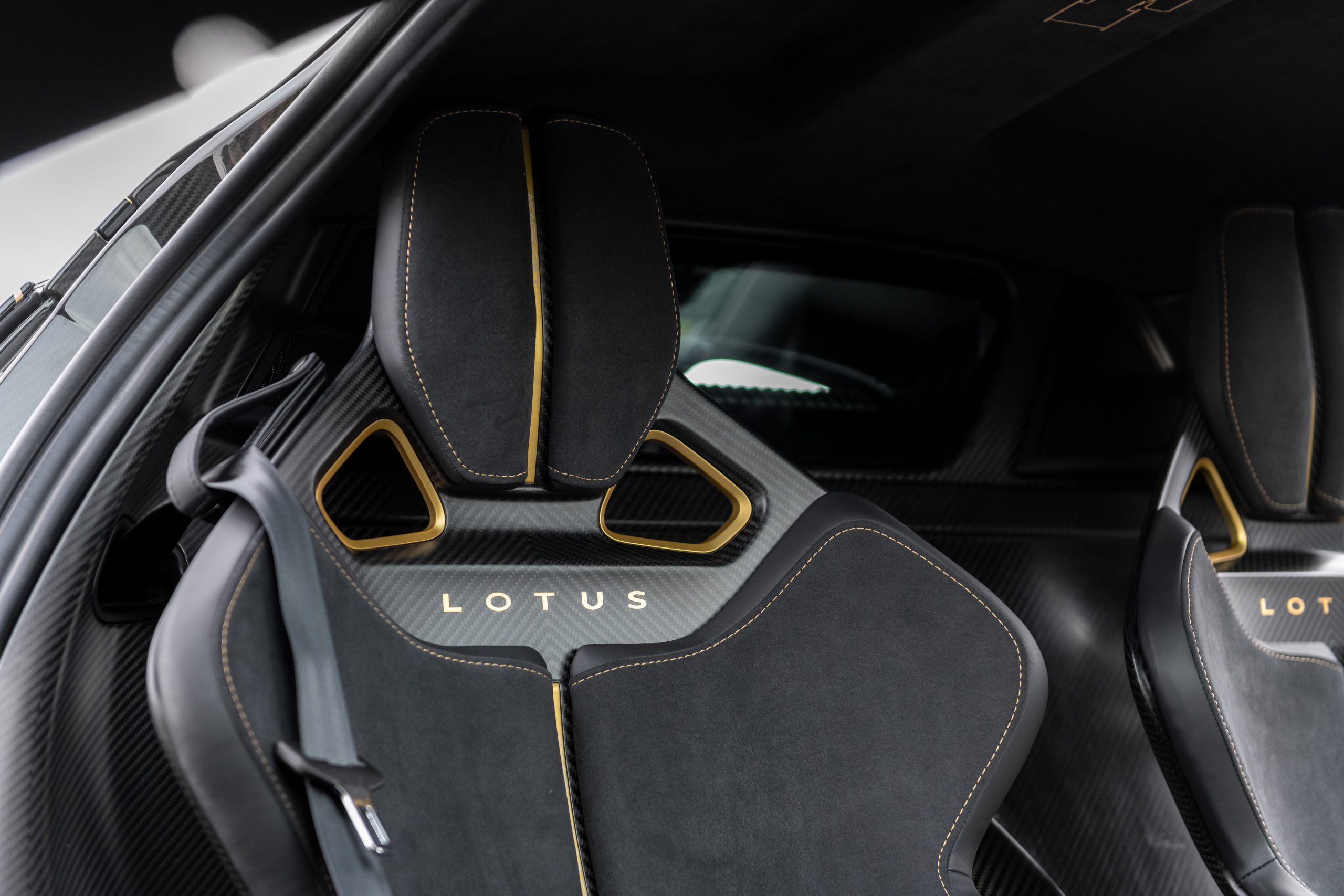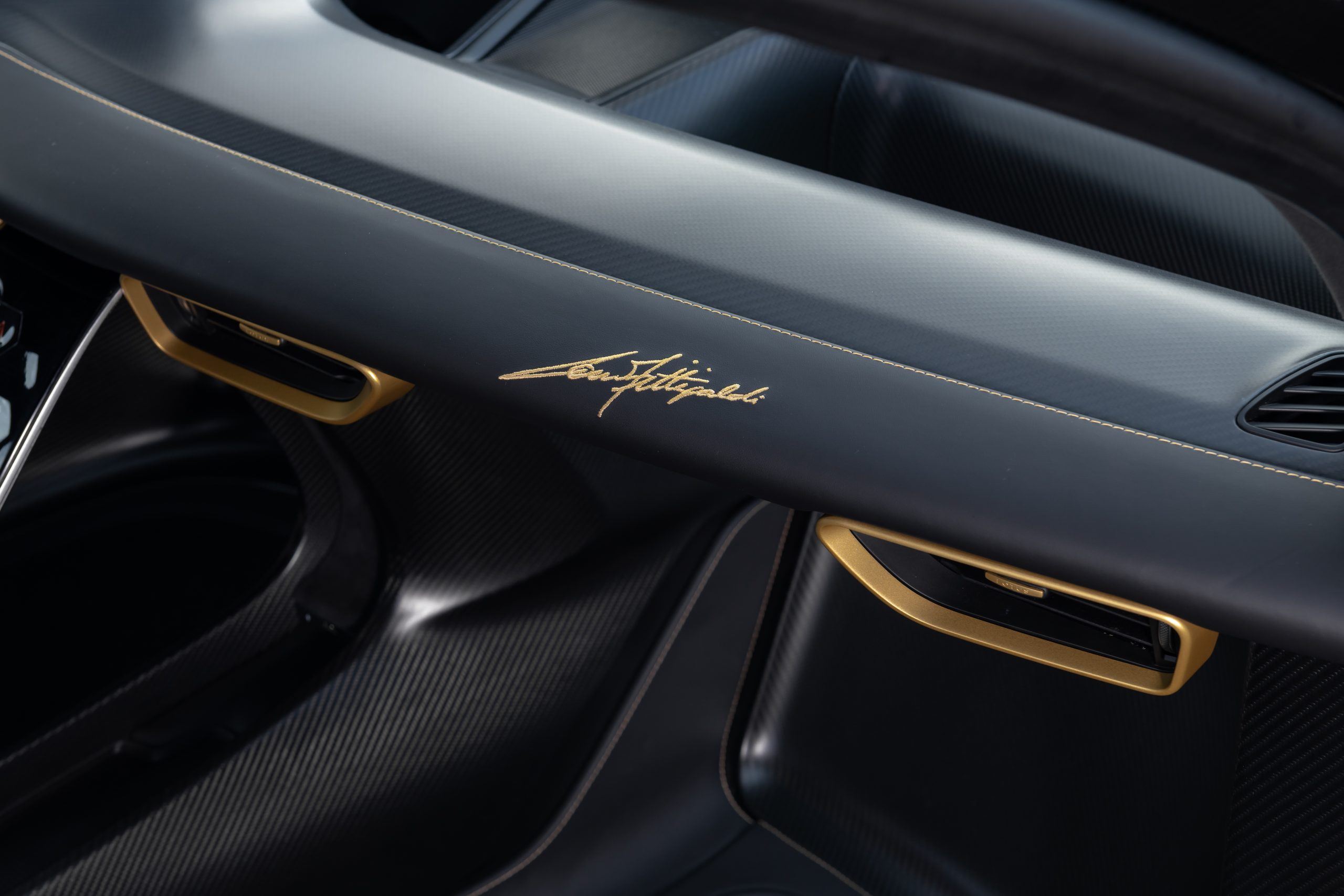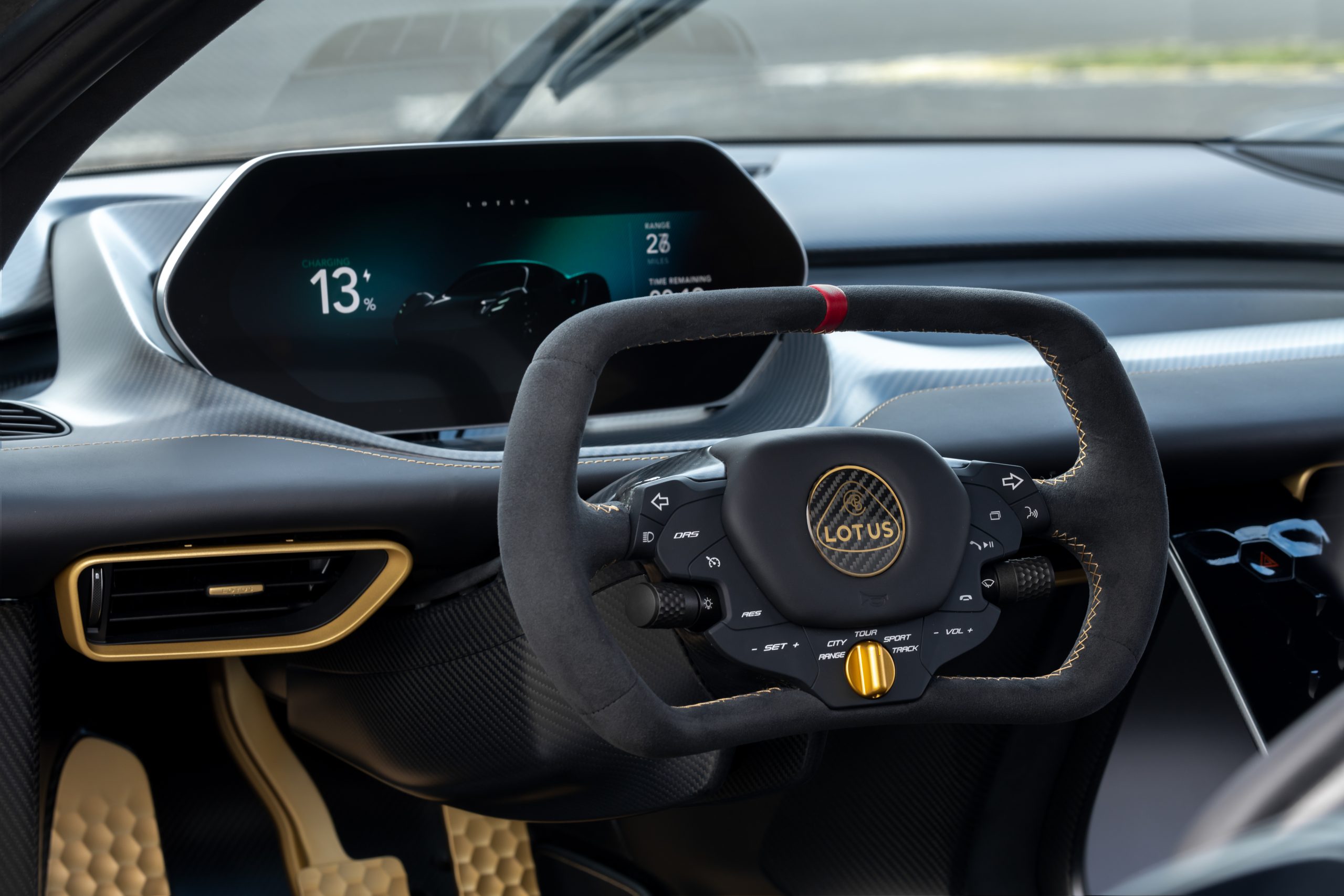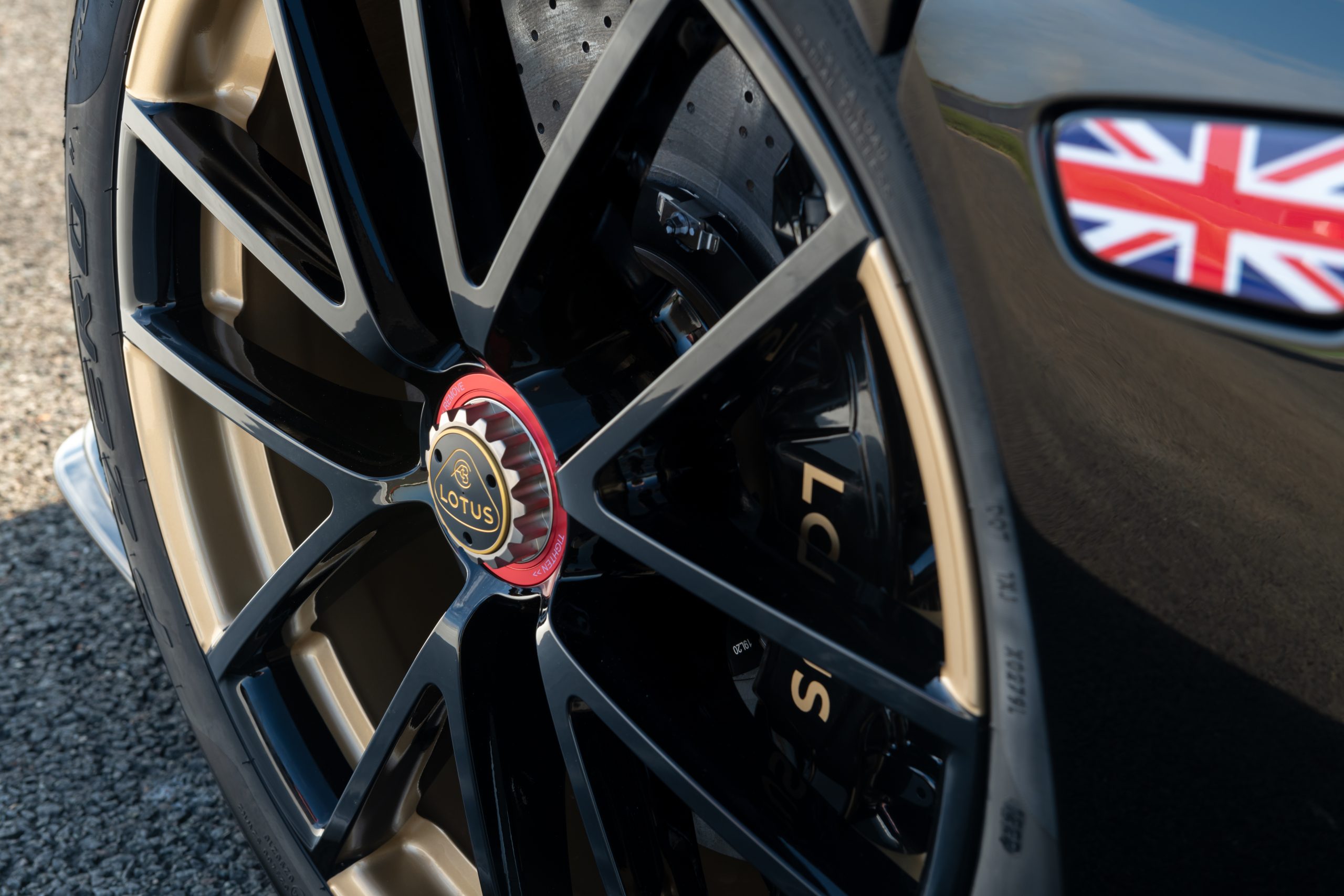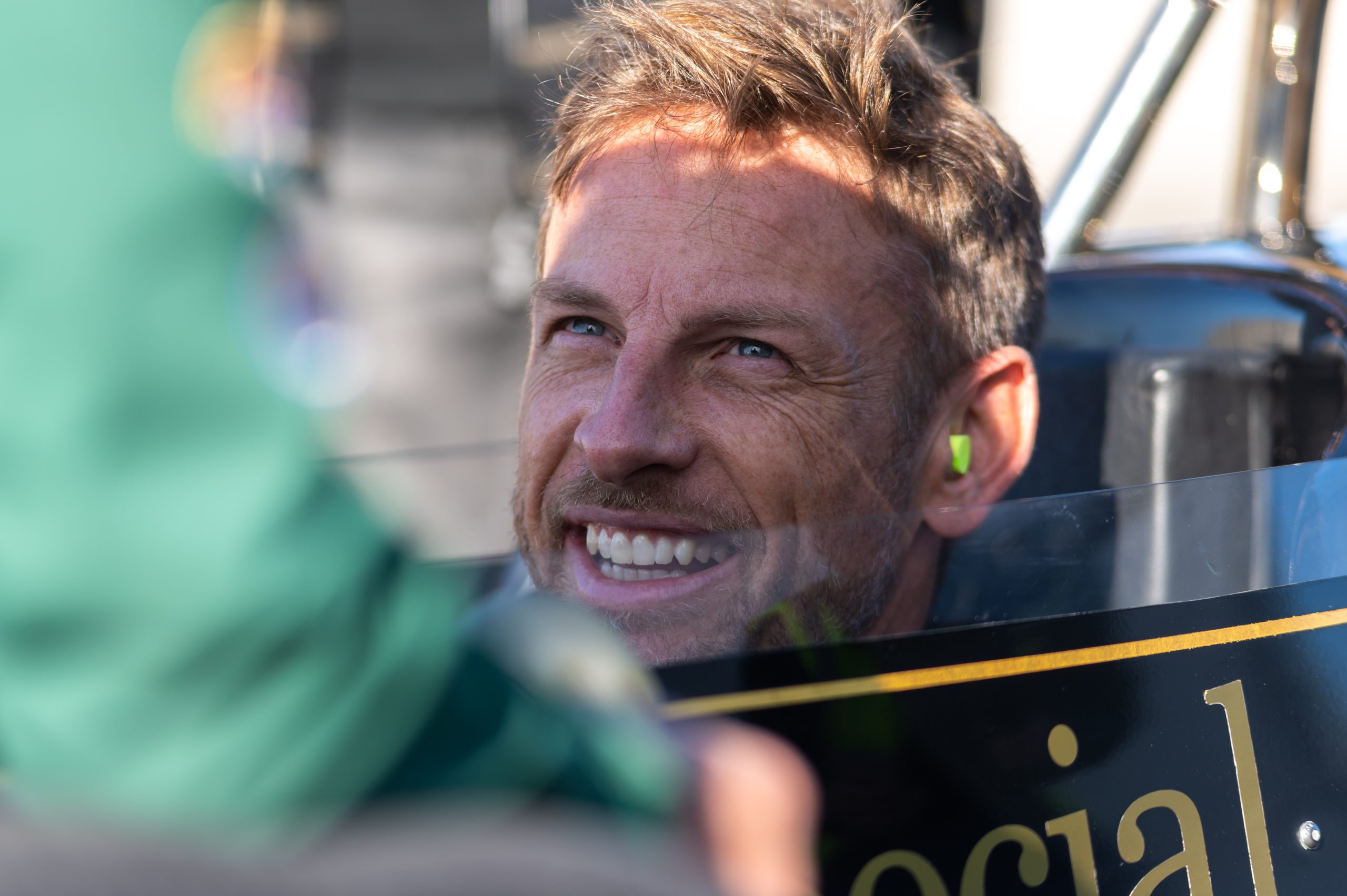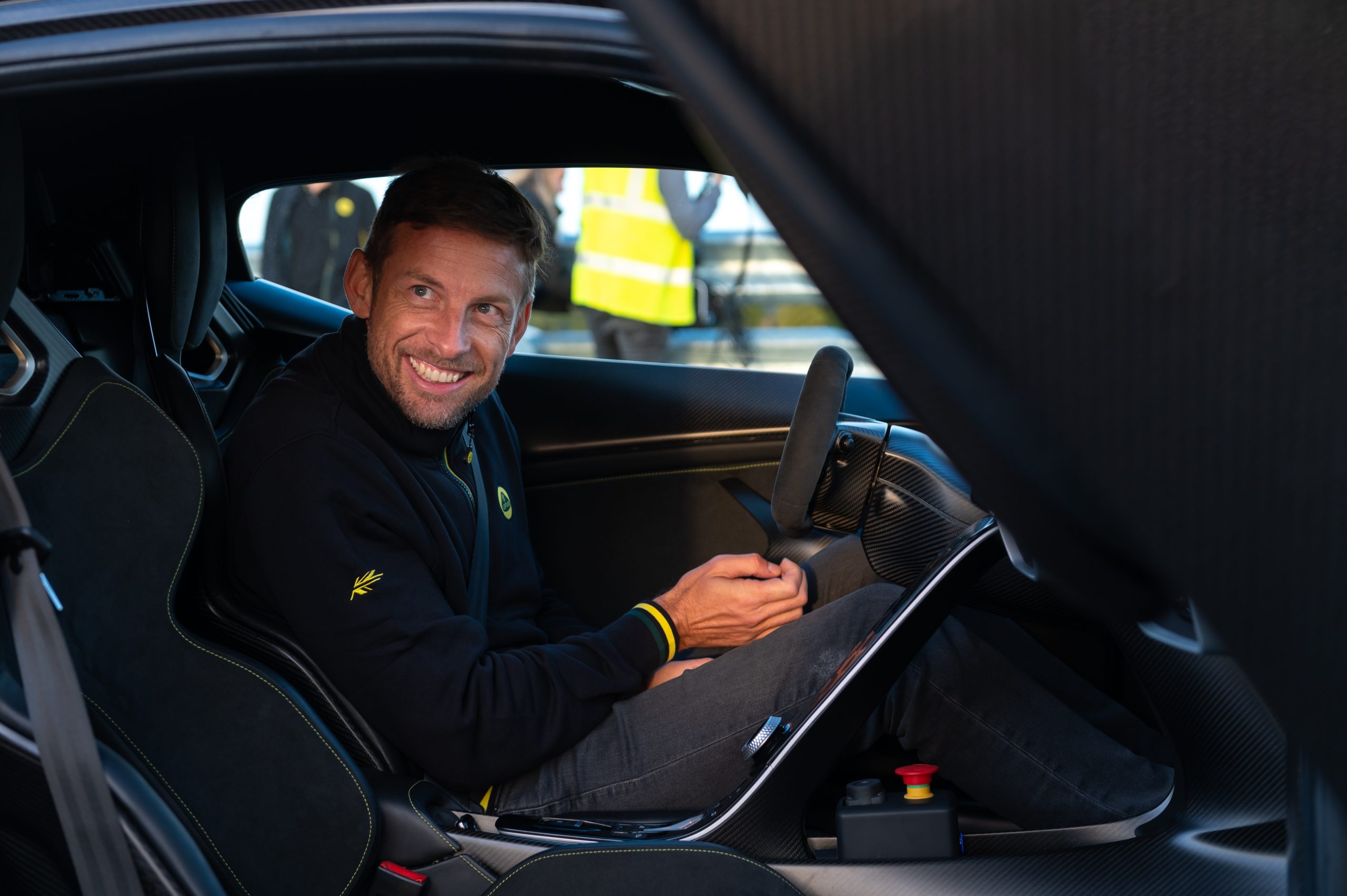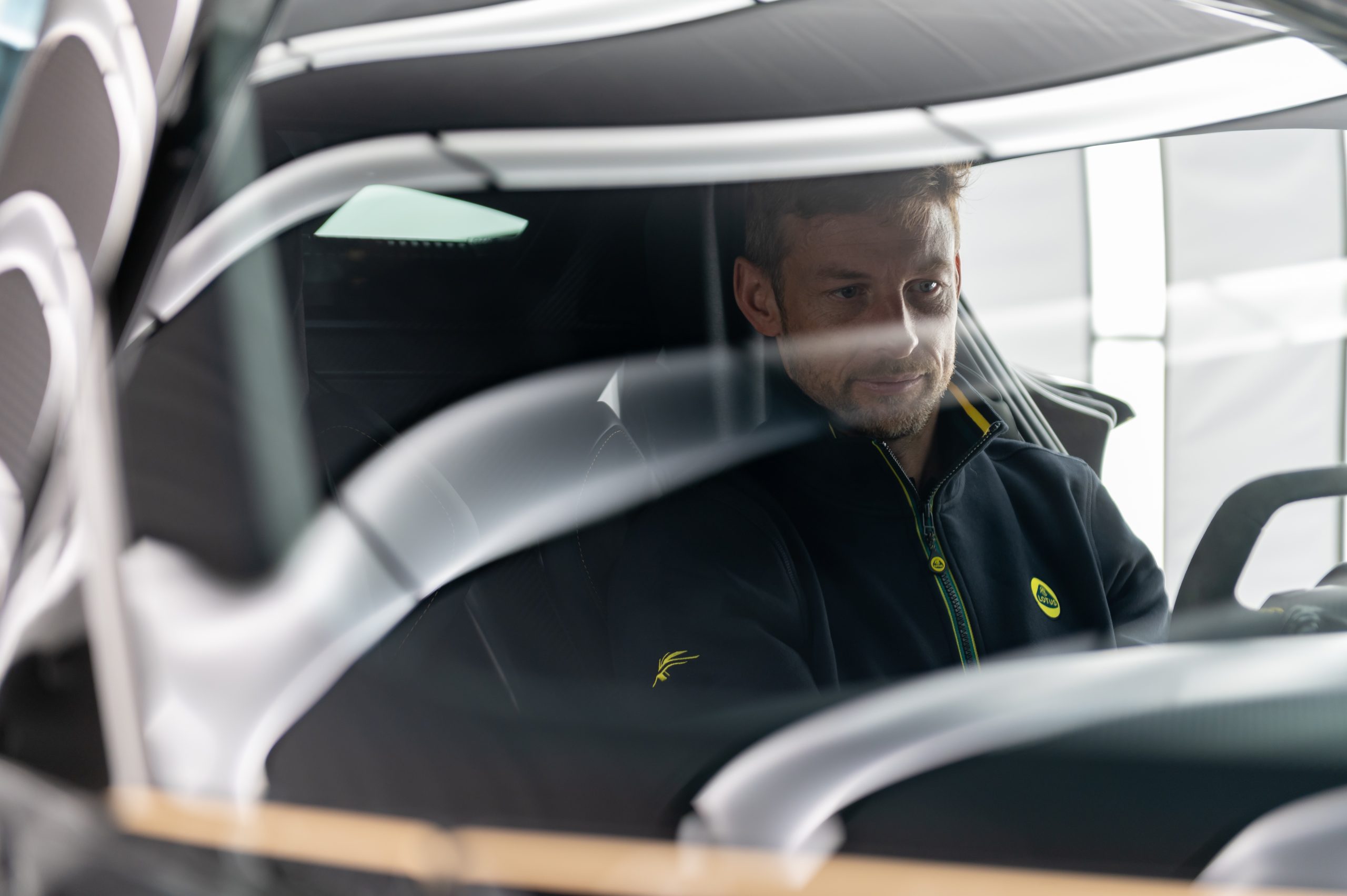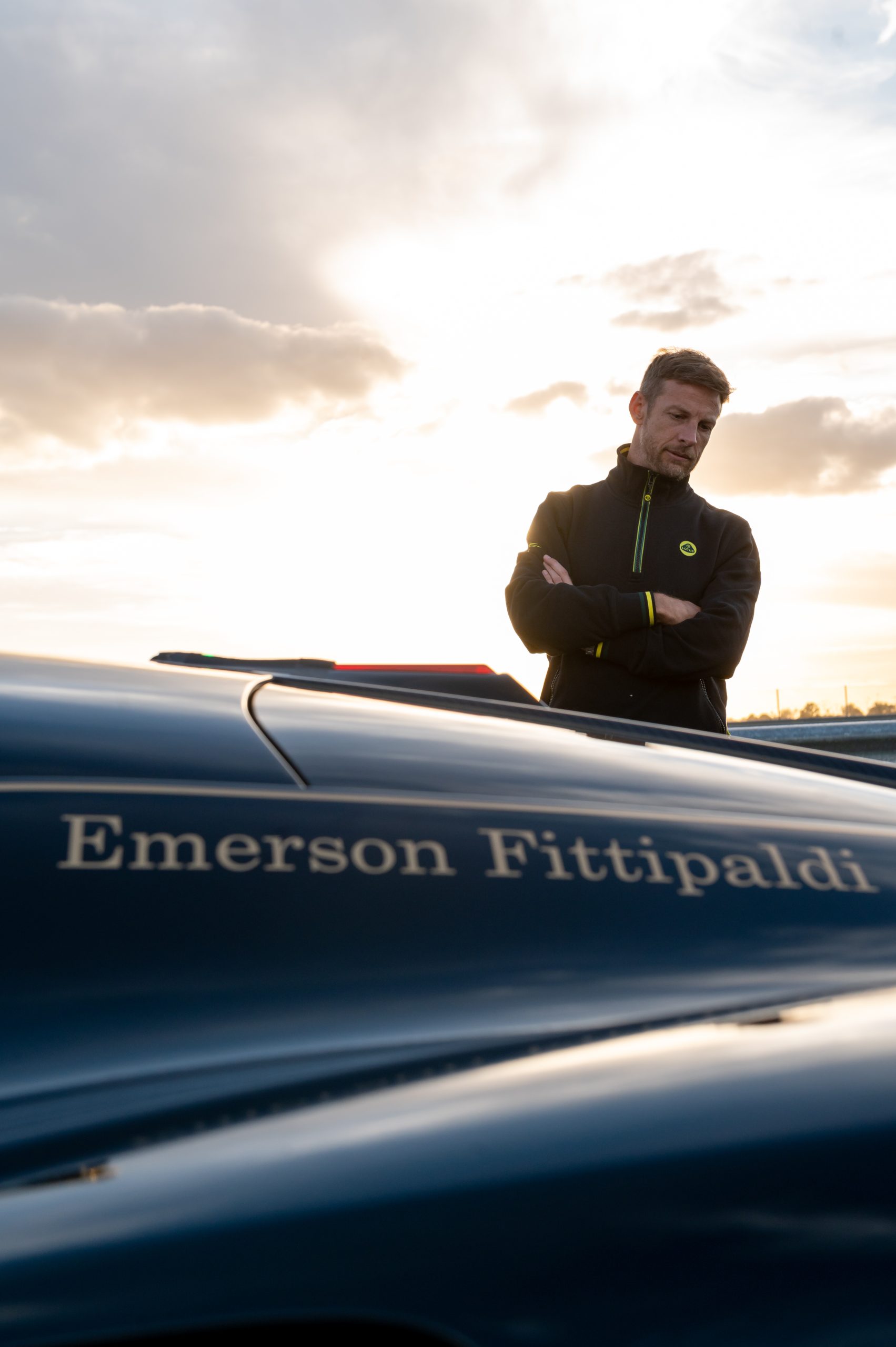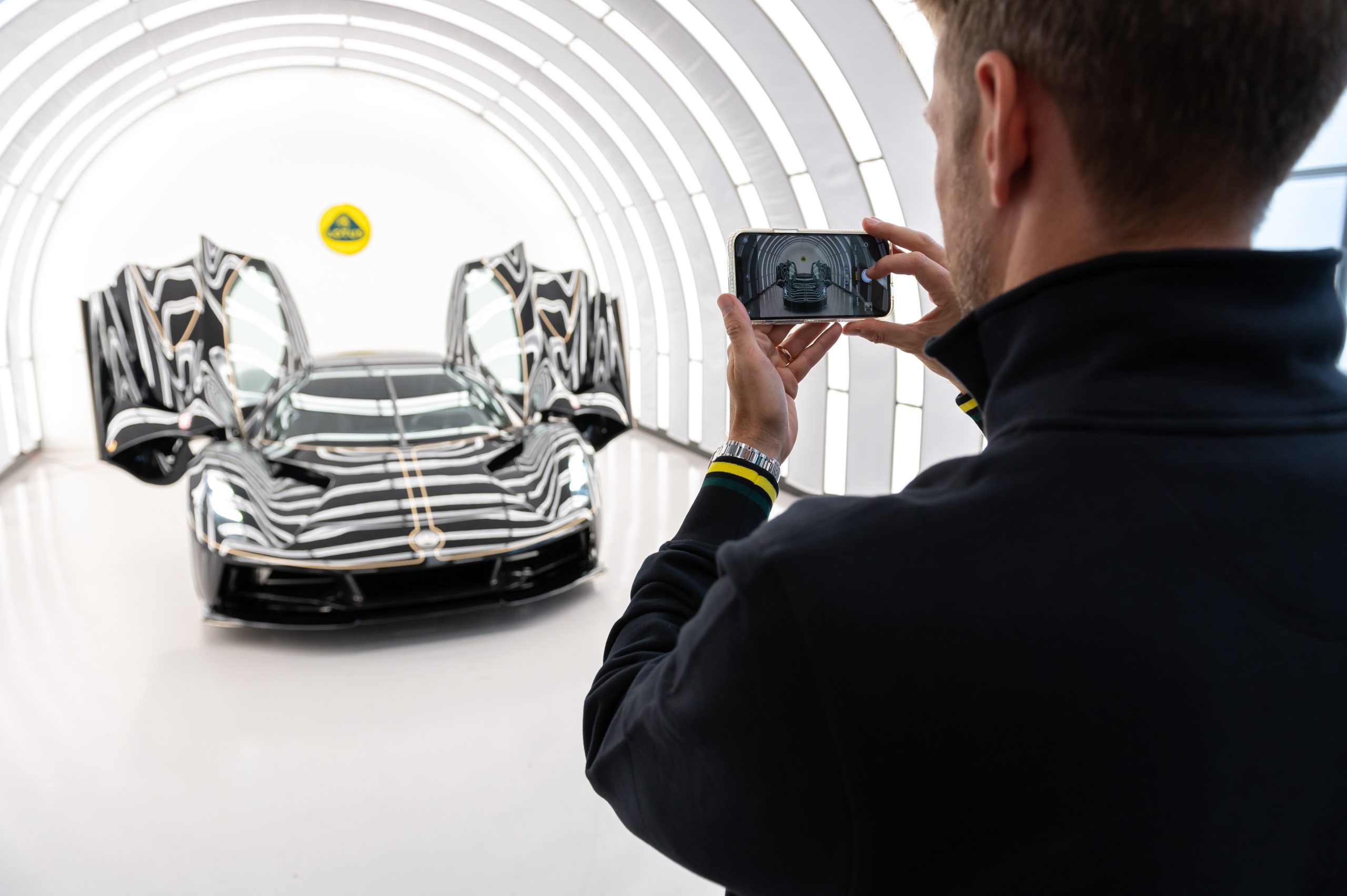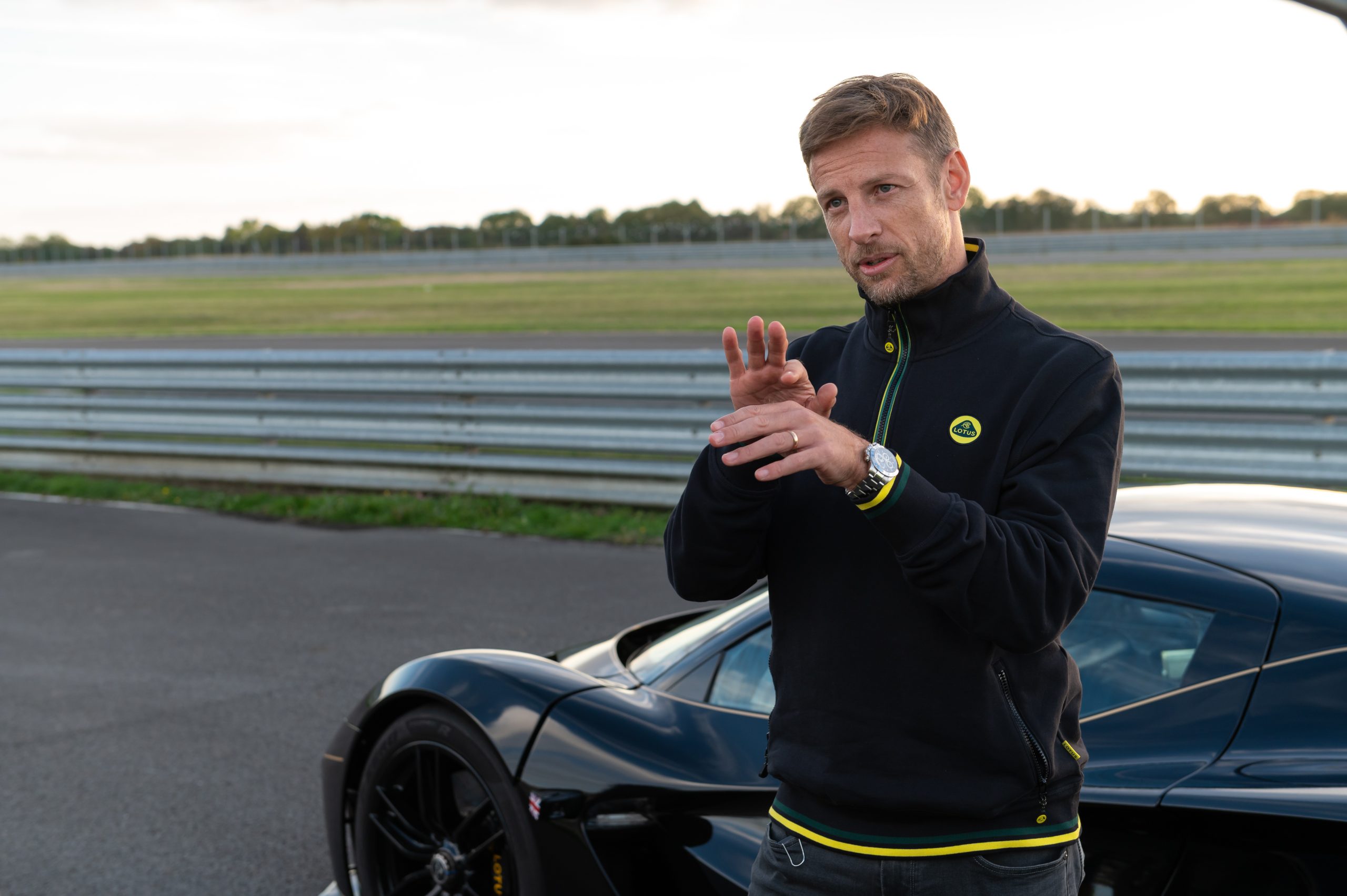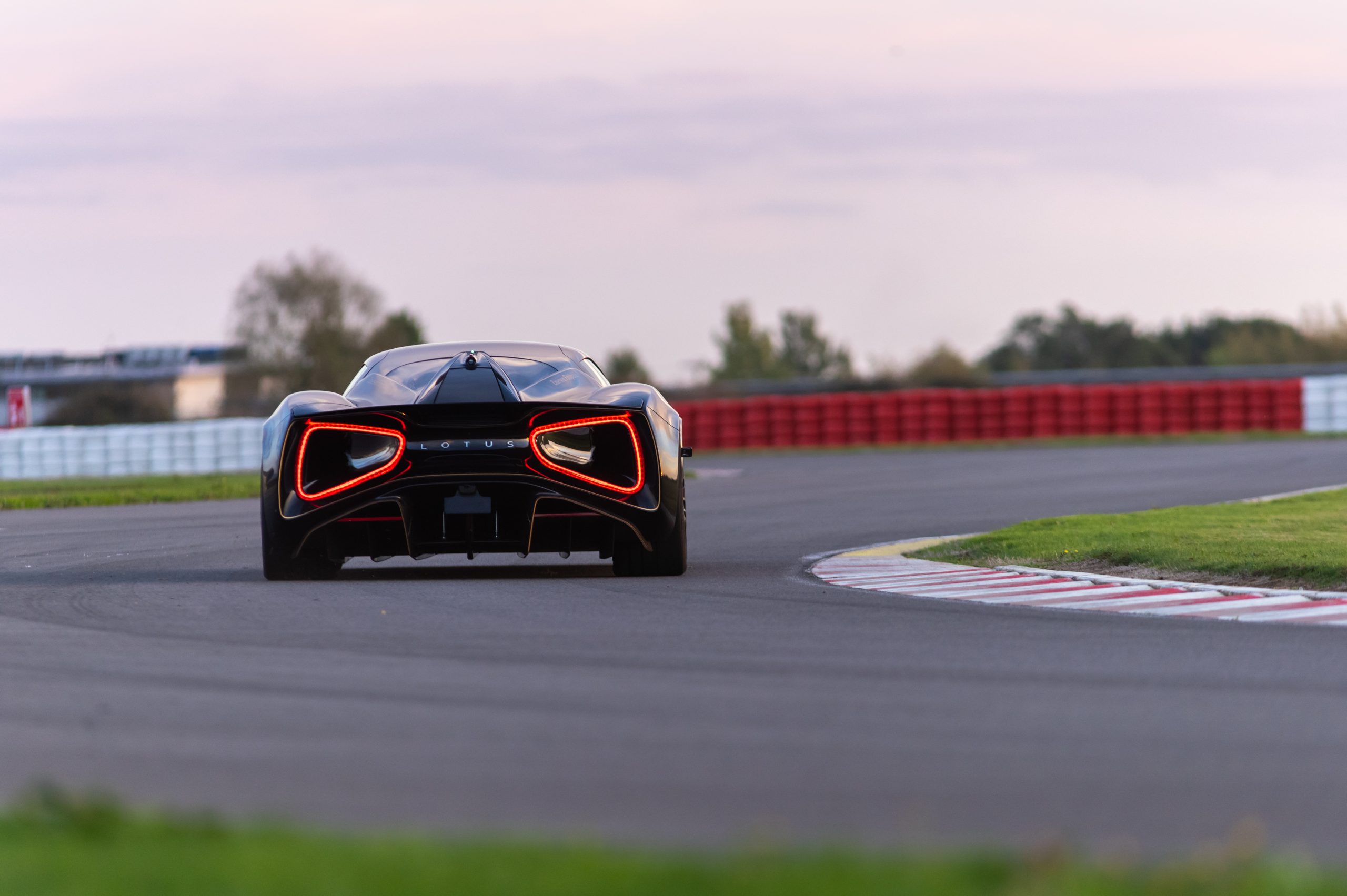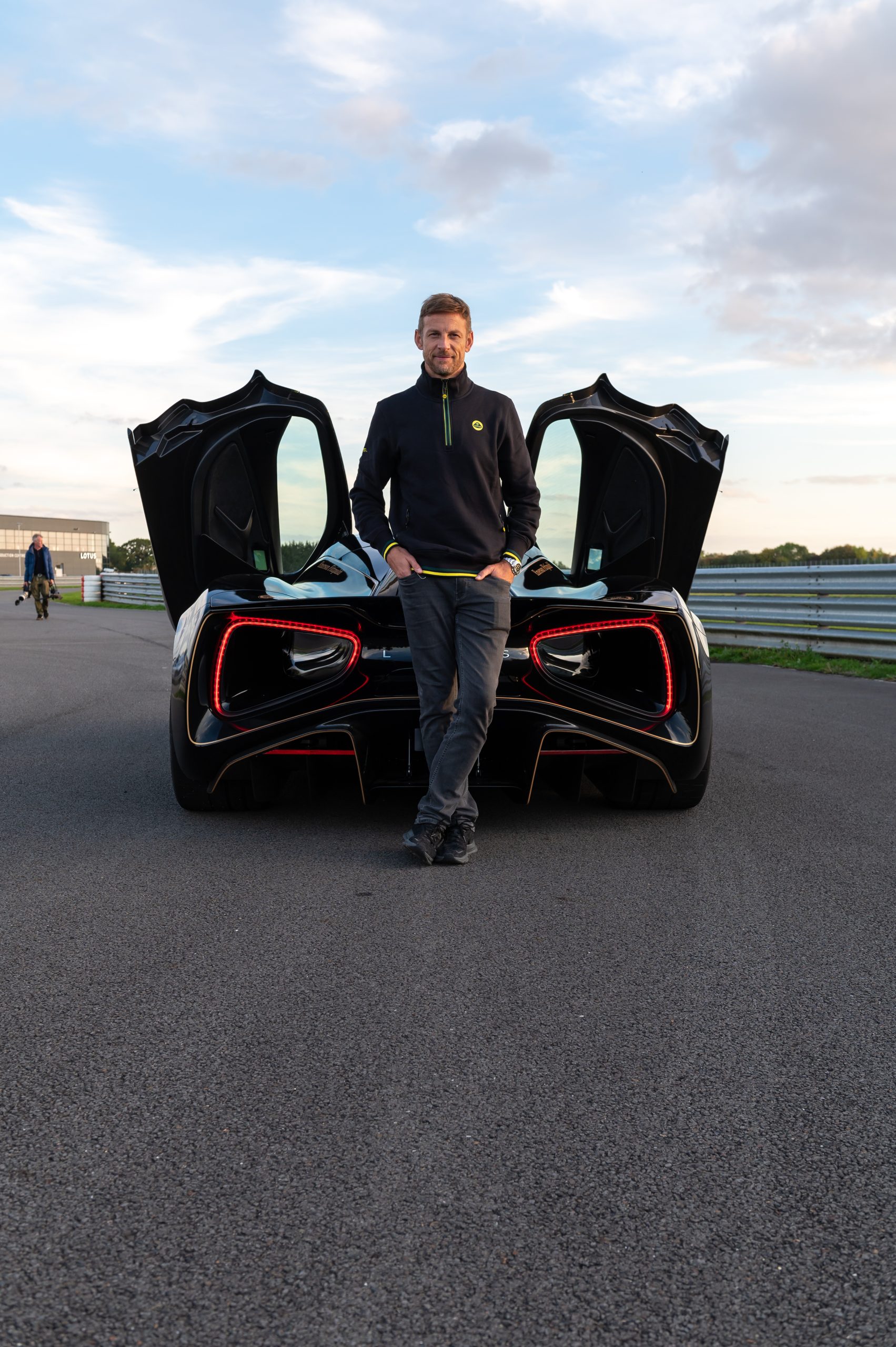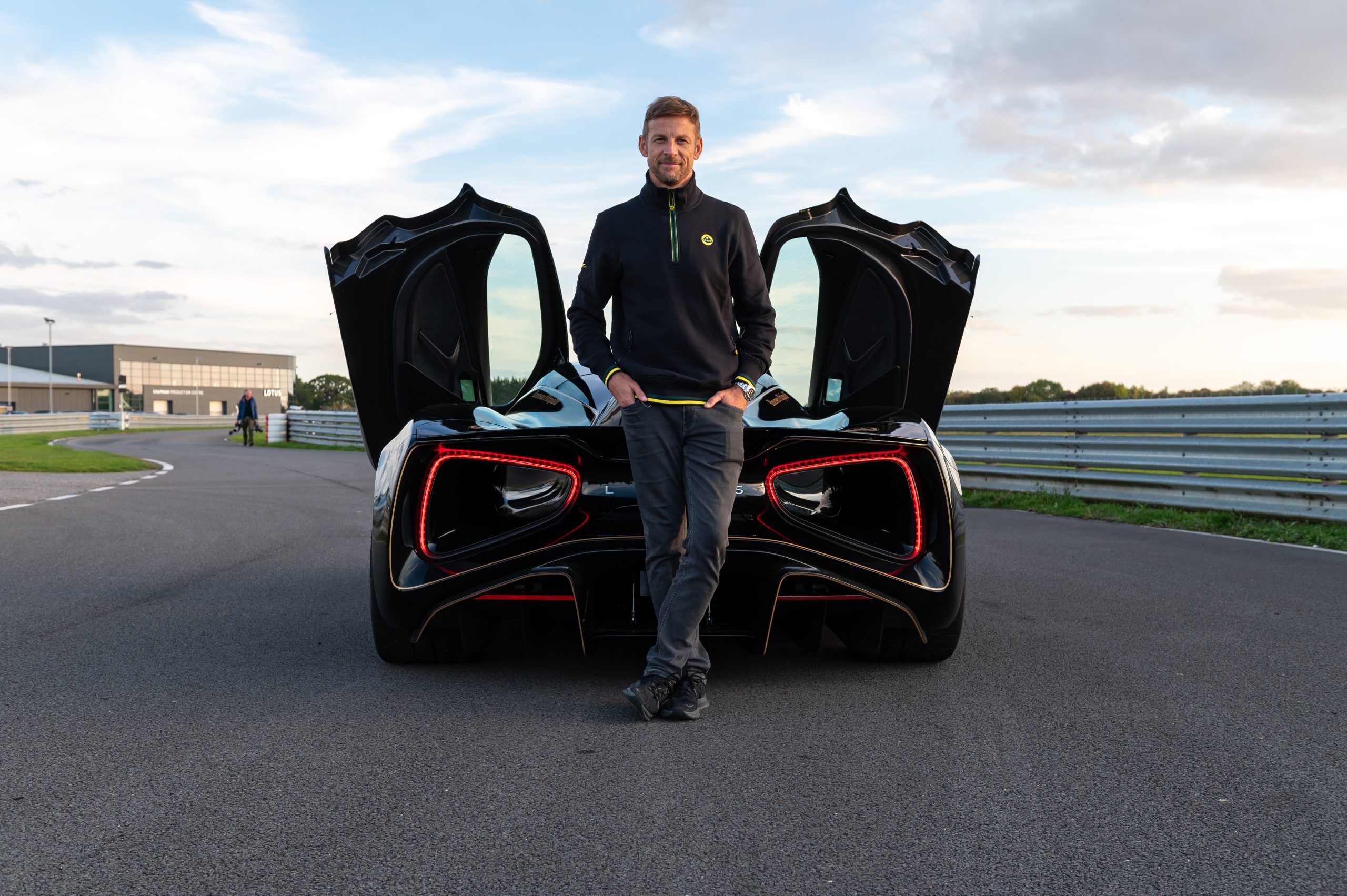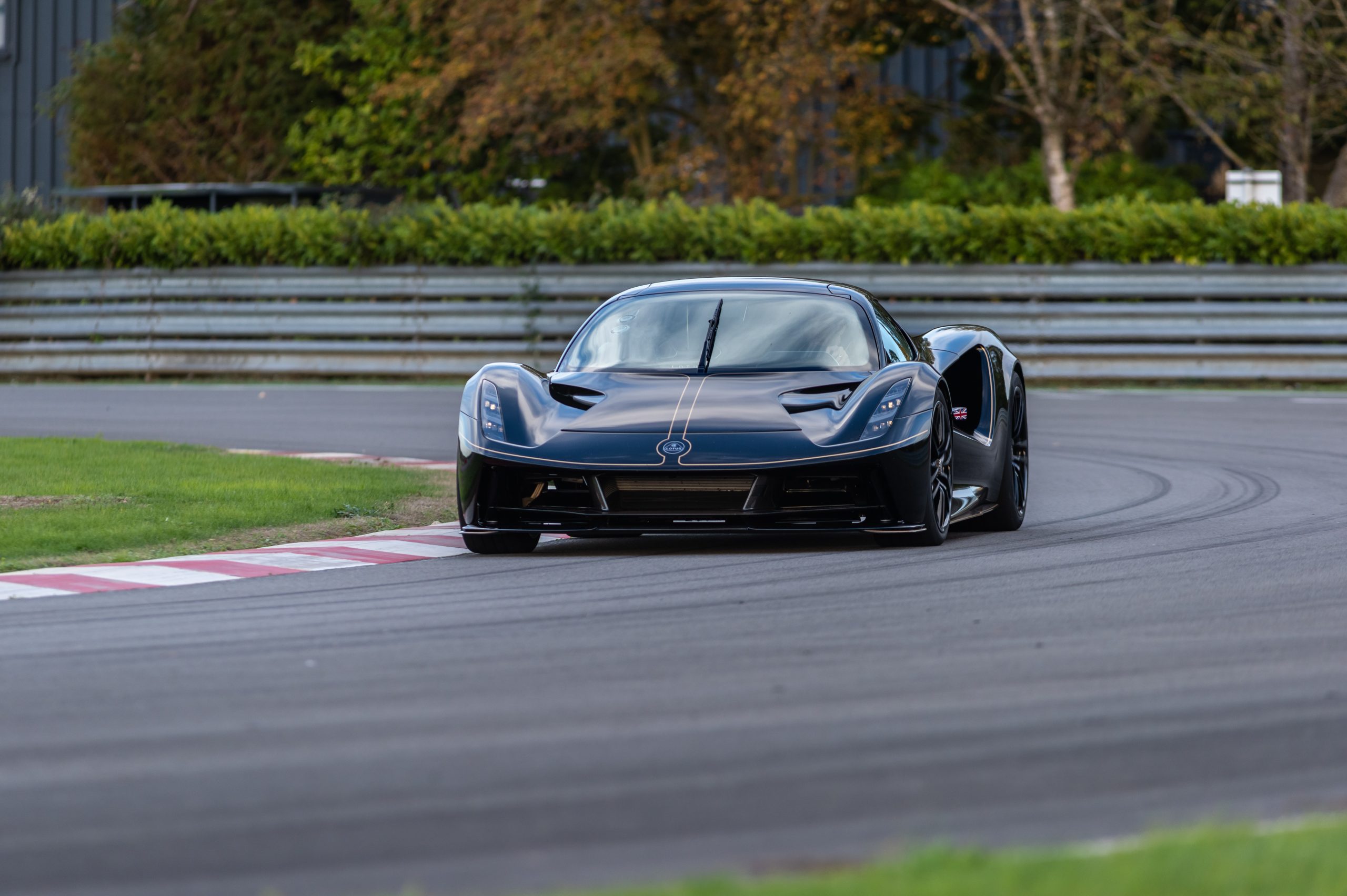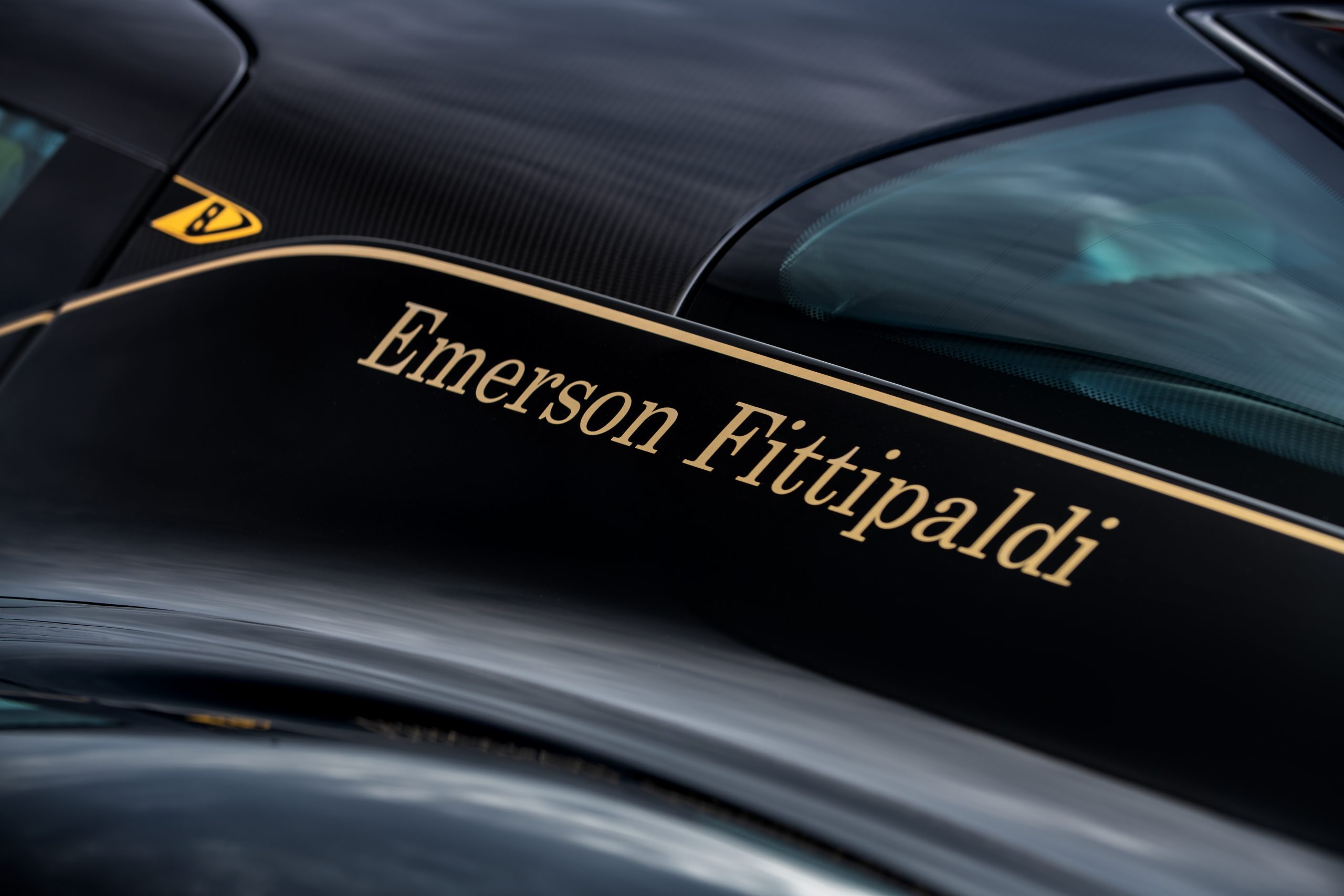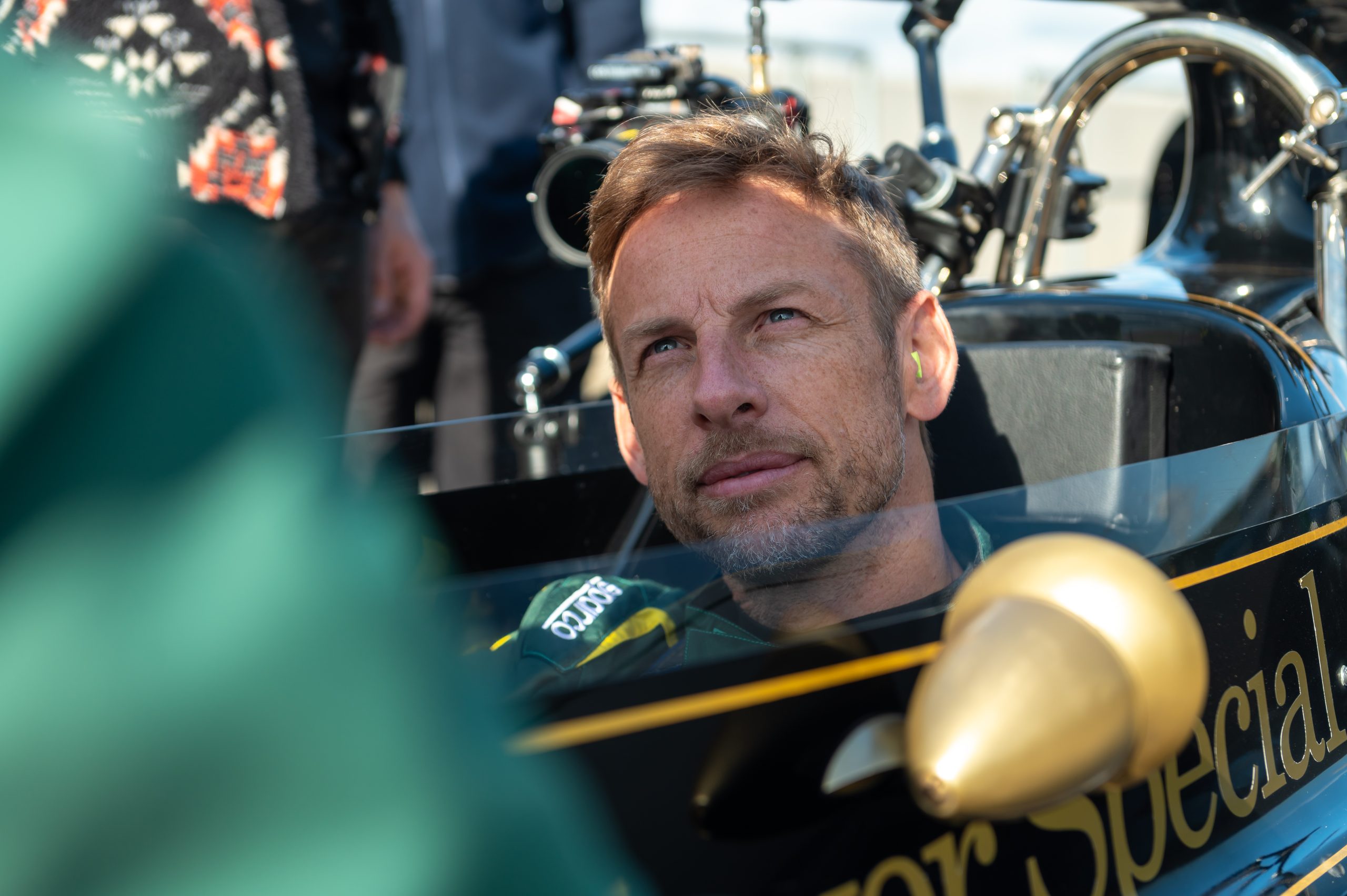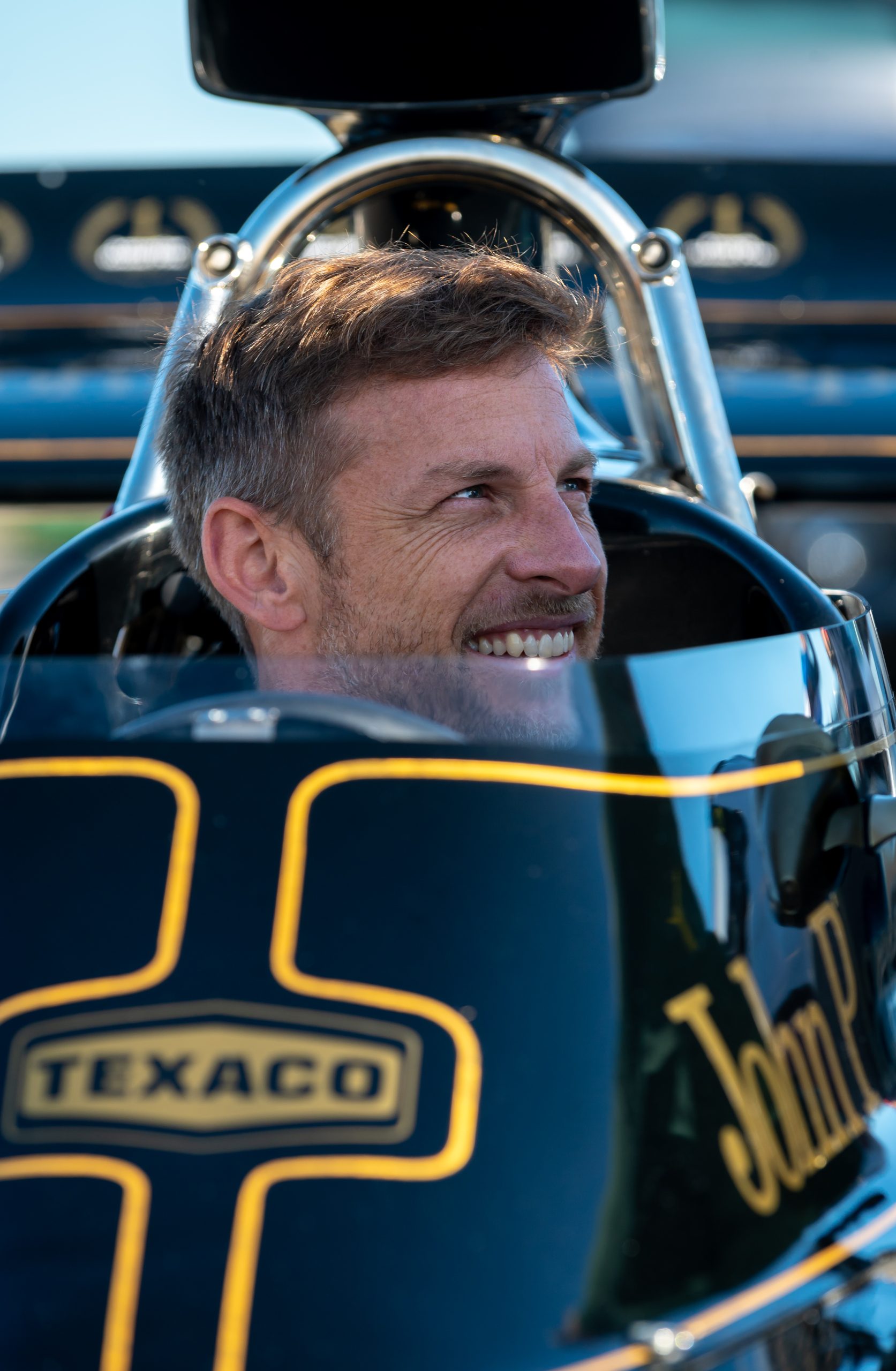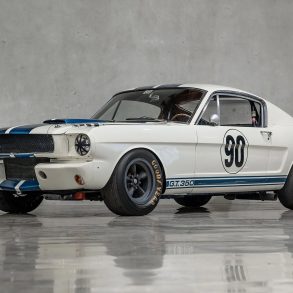The gorgeous Lotus Evija hypercar, the most powerful production car in the world, now brings even more exclusivity and desirability with the introduction of the Lotus Evija Fittipaldi. Inspired by the past to enhance the future, it is a fitting homage to one of the greatest pairings of car and driver in Formula 1 history.
Brazilian racer, Emerson Fittipaldi, was the driver who joined Lotus and eventually became a legend when he ensured his place in Formula 1 history in 1972. He drove the iconic Lotus Type 72, claiming the victory in five of the eleven races of the season. That year, Fittipaldi was able to win the Drivers’ Championship and Team Lotus got the Constructors’ Championship win.
Exactly 50 years later, Lotus is unveiling the Lotus Evija Fittipaldi, the perfect tribute to that powerful partnership. Only eight examples of the hand-built, all-electric, two-seater will be produced at Hethel in Norfolk, UK, which is the global HQ of Lotus sports car design and manufacturing. All eight examples are now sold. Deliveries of the Evija Fittipaldi will start early next year.
This project is the latest from the newly launched Lotus Advanced Performance, the bespoke design and experiential vision by Lotus.
The Evija Fittipaldi will showcase the renowned black and gold color scheme which was hand-painted along with a lot of other unique design features done to commemorate the successful collaboration. Among them are the hand-tinted plan view of the Type 72 etched into the expired carbon fiber roof and the signature of Fittipaldi hand-stitched into the dashboard.
One of the most important detail in the Evija Fittipaldi is the rotary dial on the floating central instrument panel which was hand-crafted using the original Type 72 aluminum. The recycled material ensures that an original piece of the iconic F1 race car will be part of each Evija Fittipaldi.
An iconic car deserves a very special world premiere. In line with this, clients, their families, and other VIP guests were invited in an exclusive, once-in-a-lifetime event at Hethel in celebration of the launch of the Evija Fittipaldi and the iconic Type 72.
Emerson Fittipaldi was the guest of honor during the event and he shared, “It’s fantastic to be back at Hethel for such a special occasion. I’ve really enjoyed being a part of this project and it’s been a wonderful experience revealing the car to some of the new owners. Having the opportunity to drive both the Evija Fittipaldi and my championship-winning Type 72 Formula 1 car on the test track at Hethel has been an incredible experience.”
Another highlight of the event was the historic reunion of all the eight surviving samples of the Type 72. For the first time, the eight examples – which is also the number of Evija cars to be produced – were brought together in one place, and were eventually driven on the Hethel test track.
Lotus Advanced Performance Director Simon Lane commented, “The word ‘legend’ is often overused, but this project has brought together the Lotus Evija hypercar, Emerson Fittipaldi, the Type 72 race car and our brand’s celebrated Formula 1 heritage. No argument, that is four legitimate legends, all collaborating to deliver a truly unique hypercar and a world premiere that was a real ‘pinch yourself’ moment.”
“Production of the Evija has commenced at Hethel, and these eight cars are a very special celebration of this important moment in our history,” Lane added.
The Lotus Evija Fittipaldi’s bespoke specification starts with its unique paint finish wherein its designation will be written on the bodywork in gold lettering positioned to the side of the rear window. Black and gold ‘Type 72’ wheels complements the bodywork complete with anodized center lock surrounds, painted red on the left side and green on the right side of the car. It will also be equipped with brake calipers finished in black and gold.
The active rear wing have decals that celebrate the victories of the Type 72 from the 1972 season, while the B-pillar sports the number 8, which was Fittipaldi’s number on his car during the same season. It was the number he was also sporting when he won the British Grand Prix. Completing the whole exterior style is the Lotus nose badge in carbon and gold.
The theme of luxury and bespoke design can also be seen in the interior.Throughout the cabin, the main design style is black leather interior with gold contrast stitching, there is also the exclusive roof liner stitching and gold finishes to the air vent surrounds, start/stop button, center rotary dial, and the pedals.
Classic Team Lotus, the historic motorsport business managed today by the family of Lotus founder Colin Chapman that maintains and operates Lotus F1 cars, were tapped and were instrumental in the development of the car. Based just across the road from Lotus in Hethel, they were the ones who also hosted the gala dinner during the launch.
Managing Director Clive Chapman shared, “Emerson Fittipaldi and my father enjoyed a very special relationship, and their spectacular success was a brilliant team effort by the dedicated designers and mechanics at Team Lotus. One of motorsport’s most admired drivers, it is always emotional whenever Emerson is reunited with the Lotus Type 72, which he describes as the greatest car he ever raced.”
“Bringing together the Lotus Evija, the Lotus Type 72, the black and gold livery and Emerson Fittipaldi, all in celebration of his World Championship victory 50 years on – need I say more?”
Though the Evija Fittipaldi is a powerful machine with a performance to match, the Lotus Evija experience still revolves around the driver, much like it was for Emerson Fittipaldi and the Type 72. With more than 2,000 PS, the Evija Fittipaldi is the most powerful series production car in the world, producing more than 1,700 Nm of torque. The Fittipaldi can accelerate from 0 to 62 mph, or 0 to 100 kph, in just under three seconds. For 0 to 186 mph or 0 to 300 kph, from a standing start, it only takes nine seconds. It also has a limited maximum speed of 217 mph or 350 kph.
Another Formula 1 world champion, Jensen Button, also visited Lotus early in the month to test drive the Evija, as well as Emerson’s Type 72 on the famed Hethel test track. It was Jensen Button’s first time to see the Evija in production. He took one out on track to give it a shake down just before it was launched. Jensen took the car around the 2.2-mile test track, testing the handling, ride, and performance of the car. He also subjected the car to several standing starts, and had nothing but praise after completing his test drive of the most powerful production car in the world. He shared, “It sounds like a jet engine! You think of an EV as quiet but it’s not. The torque is astronomical. It’s amazing, it puts a big smile on your face. It feels like a spaceship, the drivability and direction in the steering certainly lets you know you are driving a Lotus; I am amazed by the agility of it. Itt is a Lotus of the future and I can’t wait to drive my own Evija.”
As if taking a trip back in time, Jensen was also able to test drive Emerson’s 1972 Lotus Type 72, the car that helped Emerson claim his fist driver’s championship win. Jenson shared, “It’s lovely to get into a bit of racing history. There isn’t a lot of space, but everything is in the right position. It was easy to heel and toe. It’s a real privilege to drive such a special car.”
Led by Lotus Design Director Russell Carr, his team was able to create a stunning piece of contemporary automotive design which features a dramatic Venturi tunnel through each rear quarter, giving it a striking presence. The ‘porosity’ of the design optimized airflow, with the air channeled not just above, below, or around the Evija, but also through it, maximizing downforce and minimizing drag at the same time. The front splitter not only adds grip, but also channels cooling air towards the battery pack, E-motors, and brakes. Active aero features like the Drag Reduction System (DRS), giving it cutting edge performance. Gavan Kershaw’s team from the world-renowned Vehicle Attributes Director for Lotus, managed the driving dynamics of the Evija.
It is the first Lotus road car to have a one-piece carbon fiber monocoque chassis, so the cabin, starting from its fully adjustable race-style seats to the multi-function steering wheel, is the peak of motorsport-inspired road car technology and design.
As the Lotus Evija ushers in a new era of pure electric performance, the Lotus 72 is still the most successful racing car in F1 history. Autosport magazine, back in 2019, named the Lotus 72 as the greatest Formula 1 car ever. An innovative masterpiece from the drawing board to the track, the Lotus 72 is the first racing car to incorporate aerodynamics into its initial design. Its front splitter and integrated rear wing were specifically designed to enable the car to slice through the air and create vital downforce at the same time.
The air intake of the Type 72 was moved above the driver’s head, ensuring that undisturbed and clean air can be sucked straight into the engine. Instead of in the nose, the radiators were moved towards the sidepods of the car, not only did it increase the cooling efficiency of the car, it also improved the weight distribution of the car, and in the end, even its performance.
Lotus used the same approach on the brakes, placing them inboard instead of on each wheel to help cooling, with the tops of the discs stuck out of the bodywork. The Type 72 was the first of what would eventually come the traditional “wedge on wheels” design that was eventually used by every other competitor on the grid.
Technical Specification: Lotus Evija Fittipaldi
| Powertrain | Pure electric, 4WS |
| Power | 1500 kw (4 x 375 kw) / 2,069 PS |
| Battery power | 90 kWh (capacity) / 2,000 kW (power) |
| Torque | 1,704 Nm with torque vectoring |
| 0-100 kph / 0-62 mph | Under three seconds |
| 0-300 kph / 0-186 mph | Under nine seconds |
| Max speed | Electronically limited to 350 kph or 217 mph |
| All-electric range (WLTP Combined) | 250 miles ./ 402 km* |
| Charging time (350 kWh charger) | 18 mins |
| Weight | 1,887 kg* |
| Production run | Maximum of 130 cars |
| Overall dimensions (L/W/H) | 4,459 / 2,000 / 1,122 mm |
| Start of production | 2022 |
*Target figures


